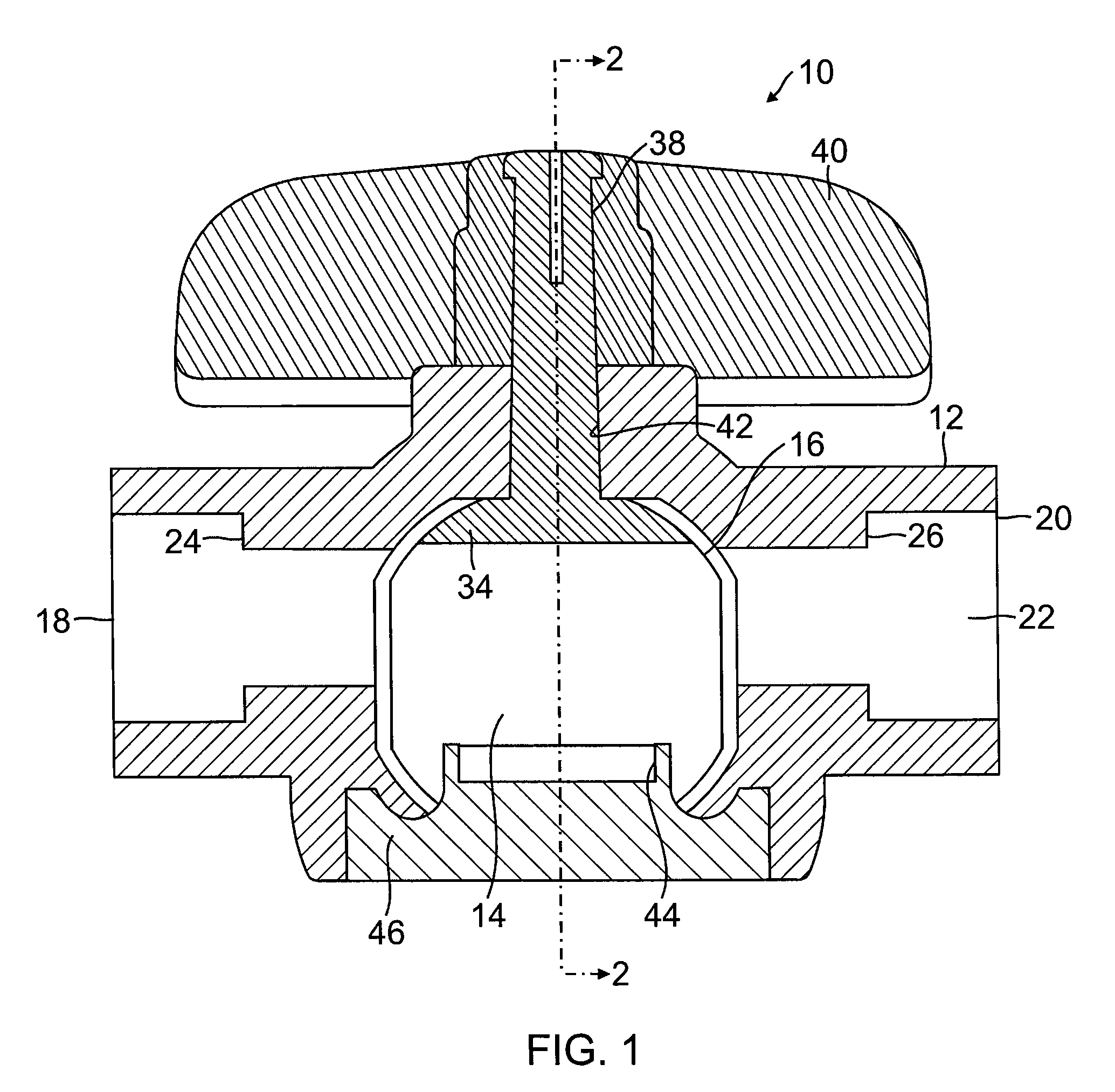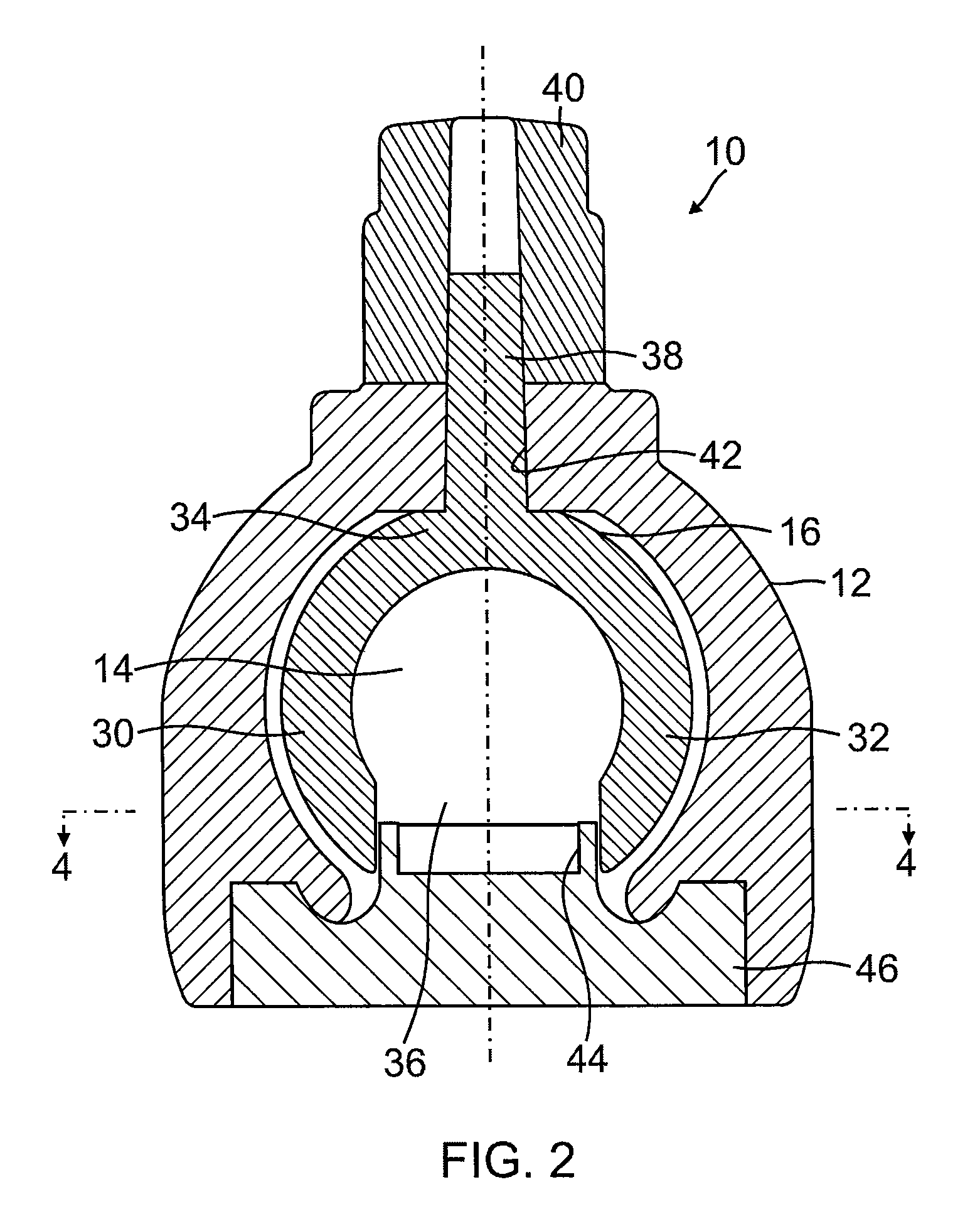Ball valve
a ball valve and valve body technology, applied in the direction of valve details, valve housings, valve arrangements, etc., can solve the problems of exacerbated possibility of disadvantageous outcome, ball to start rotating toward the open position, and disadvantages in the prior art, and achieve greater flexibility and the effect of coping ability
- Summary
- Abstract
- Description
- Claims
- Application Information
AI Technical Summary
Benefits of technology
Problems solved by technology
Method used
Image
Examples
Embodiment Construction
[0024]With reference to the drawings, which are provided for exemplification and not limitation, there is described a ball valve having features of the present invention. With reference to FIGS. 1 and 2 of the drawings, a ball valve 10 is shown having a valve housing 12. The housing 12 defines a central chamber 14 configured to have an inner profile that is spherical to receive a rotatable ball 16 as will be described. Rotatable ball 16 is preferably made of a suitable resilient material, such as Acetal. The remaining components of the invention may be of any suitable material. In various embodiments, the components may be made from Acetal, acrylonitrile butadaiene styrene (ABS), polyvinyl chloride (PVC), or chlorinated polyvinyl chloride (CPVC).
[0025]The housing 12 further defines an inlet port 18 and an outlet port 20. A throughbore 22 extends between the inlet port and the outlet port, and passes through the chamber 14 to provide a passageway for fluid to flow through the valve 1...
PUM
 Login to View More
Login to View More Abstract
Description
Claims
Application Information
 Login to View More
Login to View More - R&D
- Intellectual Property
- Life Sciences
- Materials
- Tech Scout
- Unparalleled Data Quality
- Higher Quality Content
- 60% Fewer Hallucinations
Browse by: Latest US Patents, China's latest patents, Technical Efficacy Thesaurus, Application Domain, Technology Topic, Popular Technical Reports.
© 2025 PatSnap. All rights reserved.Legal|Privacy policy|Modern Slavery Act Transparency Statement|Sitemap|About US| Contact US: help@patsnap.com



